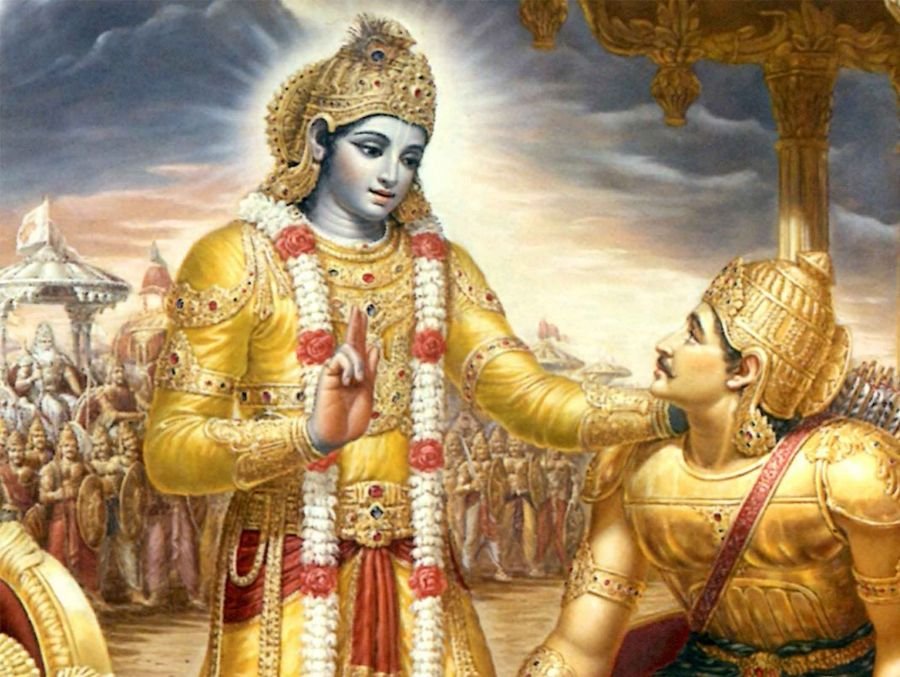(Image Courtesy Mahanidhiswami)
Whether He Leaves The Body At A Fortunate Or Bad Time, By Accident Or Arrangement, The Pure Devotee Of Divine Has No Fear Of Returning
अग्निर्ज्योतिरह: शुक्ल: षण्मासा उत्तरायणम् |
तत्र प्रयाता गच्छन्ति ब्रह्म ब्रह्मविदो जना: || 8.24||
agnir jyotir ahaḥ śhuklaḥ ṣhaṇ-māsā uttarāyaṇam
tatra prayātā gachchhanti brahma brahma-vido janāḥ|| 8.24||
Shloka Translation
BG – Ch. 8- Ver. 24:
The supreme goal is attained by those who know the Supreme Brahman and depart from this world during the six months of the sun’s northern path, the bright fortnight of the moon, and the light part of the day.
Explanation
In this and the following shlokas, Shri Krishna recounts the journey that the individual soul or jeeva follows after death. Based on its deeds on this planet, each jeeva is assigned to one of two courses. He is speaking about people who have developed single-pointed devotion to Ishvara, as suggested by the phrase.
After the jeeva’s body has ceased to function, Ishvara has designated particular deities to guide it to Lord Brahma’s home. The deities who rule over fire, light, the lunar fortnight, and the six-month interval between winter and summer are represented by the symbols agni, jyoti, shukla, and uttaraayan. The jeeva stays in Lord Brahma’s dwelling until it disintegrates, at which point it is released. Uttaraayana is regarded extremely fortunate in India. The Makar Sankraanti festival marks the start of the festival.
Verse & what we can learn
When fire, light, day, and moon are mentioned, it is to be understood that distinct governing deities preside over each of these and make arrangements for the soul’s departure. The jiva embarks on the way to a new existence at the moment of death. It is possible to acquire the impersonal brahmajyoti if one quits the body at the moment specified above, either accidentally or on purpose. Advanced yoga practitioners who are mystics can plan when and where they want to exit the body.
Others have no control; if they depart at an auspicious time, they will not have to return to the cycle of birth and death; if they do not, they will very certainly have to return. However, whether he leaves the body at an auspicious or unfavourable time, by accident or arrangement, the pure devotee of the divine consciousness has no dread of returning.
To acquire knowledge and to implement that knowledge in life one needs to be mentally and physically active and healthy and for that daily meditation is a great tool.
There are various types of meditation like Buddhist meditation, heartfulness meditation, mindfulness meditation, meditation for stress, and each meditation benefits are countless. There are also numerous meditation techniques for beginners which help in practicing daily meditation so go ahead and start your journey towards a peaceful and balanced life.
In the Next verse, Shri Krishna explains Arjuna about the second path that jeevas take after death.
Let’s learn to live with “The Gita” via Meditation Affinity…
